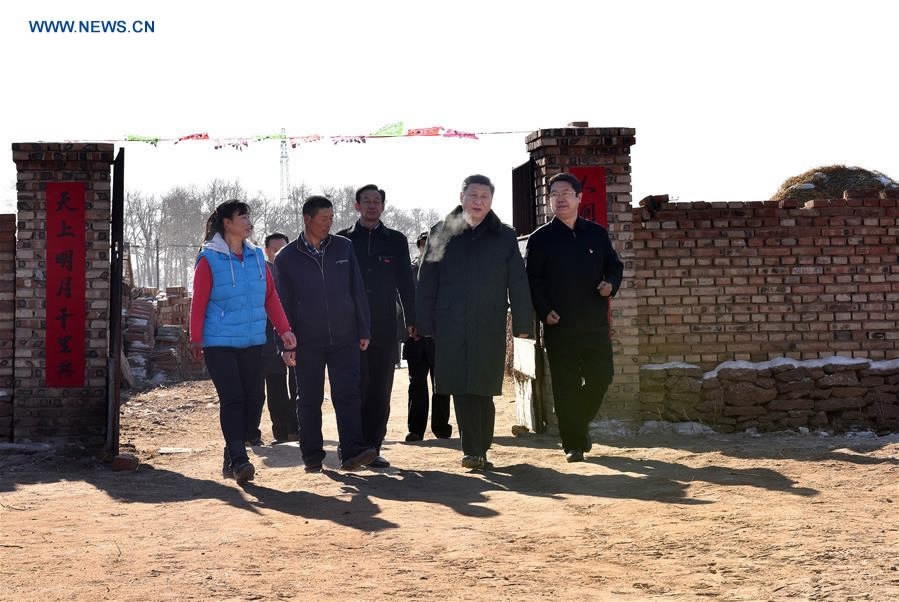Zambian official praises China’s targeted poverty alleviation model – news.cgtn.com

Report on China’s Targeted Poverty Alleviation Model and its Alignment with Sustainable Development Goals
1. Introduction
This report analyzes the targeted poverty alleviation model implemented by China, based on observations from Batuke Imenda, Secretary General of Zambia’s United Party for National Development (UPND). The model’s strategies demonstrate a strong alignment with several key United Nations Sustainable Development Goals (SDGs), offering a potential framework for global poverty reduction efforts.
2. Strategic Alignment with Core Sustainable Development Goals
China’s approach has been recognized for its effectiveness in lifting hundreds of millions of people out of deprivation. The model’s success is rooted in principles that directly support the 2030 Agenda for Sustainable Development.
- SDG 1 (No Poverty): The primary objective of the model is the eradication of poverty in all its forms, directly addressing the core mission of SDG 1.
- SDG 10 (Reduced Inequalities): By focusing on the specific needs of rural western regions, the policy actively works to reduce regional and economic disparities within the country.
- SDG 17 (Partnerships for the Goals): The commendation from a Zambian official highlights the model’s relevance for international cooperation and knowledge sharing, particularly through South-South collaboration.
3. Dual-Focus Implementation Strategy
The model is distinguished by a dual-focus strategy that combines immediate intervention with mechanisms for long-term sustainability and oversight, ensuring progress is both achieved and maintained.
-
Addressing Immediate Needs
This component focuses on direct material and economic improvements for impoverished communities, contributing to multiple SDGs:- Improved Housing: Directly supports SDG 11 (Sustainable Cities and Communities) by ensuring access to adequate, safe, and affordable housing.
- Enhanced Livelihoods: Promotes SDG 8 (Decent Work and Economic Growth) by creating opportunities for sustainable income generation and improving living standards.
-
Ensuring Lasting Impact and Oversight
This component establishes a framework for monitoring and accountability to prevent regression into poverty.- Academic Engagement: The involvement of university students in tracking progress provides a rigorous and continuous oversight mechanism. This practice simultaneously contributes to SDG 4 (Quality Education) by offering students practical experience in social development and data analysis, fostering a new generation of development professionals.
4. Conclusion: A Model for Sustainable Governance
The combination of targeted, immediate assistance with robust, long-term monitoring reflects a comprehensive governance strategy. This visionary approach ensures that progress towards SDG 1 (No Poverty) is not only achieved but also sustained, providing a valuable case study for nations committed to the full implementation of the Sustainable Development Goals.
Relevant Sustainable Development Goals (SDGs)
The issues discussed in the article are primarily connected to the following Sustainable Development Goals:
-
SDG 1: No Poverty
This is the central theme of the article. The text explicitly focuses on China’s “remarkable poverty alleviation achievements” and its model for lifting “hundreds of millions out of deprivation.” The entire discussion revolves around strategies and policies aimed at eradicating poverty.
-
SDG 17: Partnerships for the Goals
The context of the article involves a Zambian official praising and analyzing China’s development model. This points to international cooperation, specifically South-South cooperation, where developing countries share knowledge and successful strategies to support each other’s national plans for achieving the SDGs.
Specific SDG Targets
Based on the article’s content, the following specific targets can be identified:
-
Target 1.2: By 2030, reduce at least by half the proportion of men, women and children of all ages living in poverty in all its dimensions according to national definitions.
The article highlights China’s success with “targeted government policies” that have “lifted hundreds of millions out of deprivation.” This refers to a comprehensive, national-level strategy to reduce poverty based on its own definitions and context, which directly aligns with this target.
-
Target 1.4: By 2030, ensure that all men and women, in particular the poor and the vulnerable, have equal rights to economic resources, as well as access to basic services…
The article mentions that China’s model tackles urgent needs by “improving housing and livelihoods in rural western regions.” Improving housing addresses the need for basic services, while enhancing livelihoods relates to providing access to economic resources, both of which are key components of this target.
-
Target 17.9: Enhance international support for implementing effective and targeted capacity-building in developing countries to support national plans to implement all the Sustainable Development Goals, including through North-South, South-South and triangular cooperation.
The article features a Zambian official praising China’s “targeted poverty alleviation model.” This interaction represents an instance of South-South knowledge sharing, where one developing country (Zambia) is learning from the “effective and targeted” national plans of another (China) to potentially build its own capacity for poverty reduction.
Implied Indicators for Measuring Progress
The article implies several ways to measure progress towards the identified targets:
-
Reduction in the number of people living in poverty
The article’s central claim that “hundreds of millions” were lifted out of deprivation implies that a key indicator is the absolute number or proportion of the population moving above the poverty line. This would be used to measure progress against Target 1.2.
-
Improvements in living conditions and economic opportunities
The mention of “improving housing and livelihoods” suggests that indicators would include data on the quality of housing and the income levels or economic stability of households in targeted rural regions. This helps measure the multi-dimensional aspects of poverty addressed in Target 1.4.
-
System for monitoring and evaluation
A unique indicator of implementation and accountability is explicitly mentioned: “engaging university students to track progress during academic breaks.” This method of “rigorous oversight” serves as an indicator of the robustness of the monitoring system designed to ensure the poverty alleviation efforts have a “lasting impact” and to safeguard “against regression.”
Summary of Findings
| SDGs | Targets | Indicators |
|---|---|---|
| SDG 1: No Poverty |
|
|
| SDG 17: Partnerships for the Goals |
|
|
Source: news.cgtn.com

What is Your Reaction?
 Like
0
Like
0
 Dislike
0
Dislike
0
 Love
0
Love
0
 Funny
0
Funny
0
 Angry
0
Angry
0
 Sad
0
Sad
0
 Wow
0
Wow
0













































































